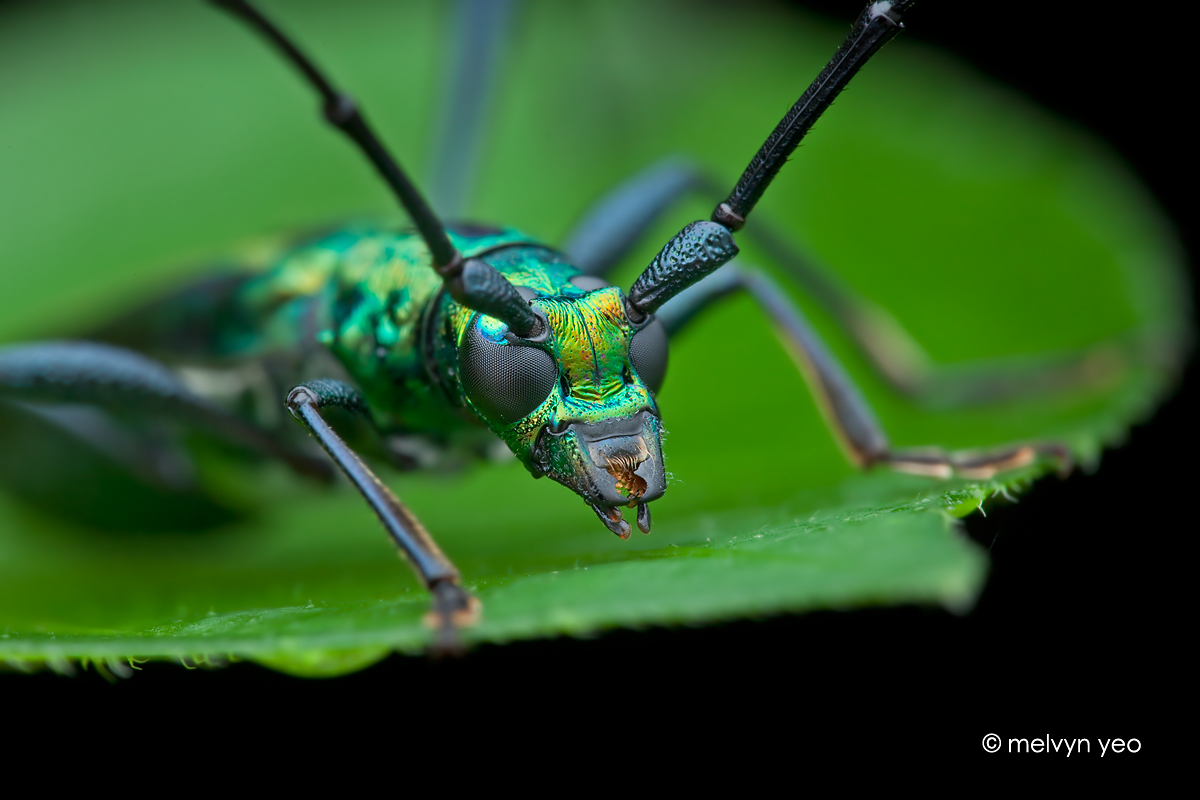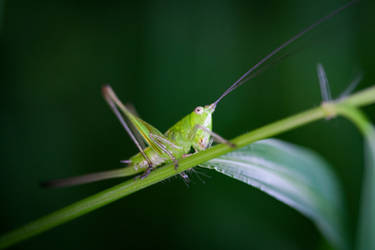ShopDreamUp AI ArtDreamUp
Deviation Actions
Suggested Deviants
Suggested Collections
You Might Like…
Featured in Groups
Description
My first metallic green longhorn beetle  Taken at night in Singapore forest. Full body shot here
Taken at night in Singapore forest. Full body shot here
farm8.staticflickr.com/7714/16…
Quote from en.wikipedia.org/wiki/Longhorn…
The longhorn beetles (Cerambycidae; also known as long-horned beetles or longicorns) are a cosmopolitan family of beetles, typically characterized by extremely long antennae, which are often as long as or longer than the beetle's body. In various members of the family, however, the antennae are quite short (e.g., Neandra brunnea, figured below) and such species can be difficult to distinguish from related beetle families such as Chrysomelidae. The family is large, with over 20,000 species described, slightly more than half from the Eastern Hemisphere. Several are serious pests. The larvae, called roundheaded borers, bore into wood, where they can cause extensive damage to either living trees or untreated lumber (or, occasionally, to wood in buildings; the old-house borer, Hylotrupes bajulus, being a particular problem indoors). A number of species mimic ants, bees, and wasps, though a majority of species are cryptically colored. The rare titan beetle (Titanus giganteus) from northeastern South America is often considered the largest (though not the heaviest, and not the longest including legs) insect, with a maximum known body length of just over 16.7 centimetres (6.6 in).[2]
As with many large families, different authorities have tended to recognize many different subfamilies, or sometimes split subfamilies off as separate families entirely (e.g., Disteniidae, Oxypeltidae, and Vesperidae);[3] there is thus some instability and controversy regarding the constituency of the Cerambycidae.[4] There are few truly defining features for the group as a whole, at least as adults, as there are occasional species or species groups which may lack any given feature; the family and its closest relatives, therefore, constitute a taxonomically difficult group, and relationships of the various lineages are still poorly understood.[5]
farm8.staticflickr.com/7714/16…
Quote from en.wikipedia.org/wiki/Longhorn…
The longhorn beetles (Cerambycidae; also known as long-horned beetles or longicorns) are a cosmopolitan family of beetles, typically characterized by extremely long antennae, which are often as long as or longer than the beetle's body. In various members of the family, however, the antennae are quite short (e.g., Neandra brunnea, figured below) and such species can be difficult to distinguish from related beetle families such as Chrysomelidae. The family is large, with over 20,000 species described, slightly more than half from the Eastern Hemisphere. Several are serious pests. The larvae, called roundheaded borers, bore into wood, where they can cause extensive damage to either living trees or untreated lumber (or, occasionally, to wood in buildings; the old-house borer, Hylotrupes bajulus, being a particular problem indoors). A number of species mimic ants, bees, and wasps, though a majority of species are cryptically colored. The rare titan beetle (Titanus giganteus) from northeastern South America is often considered the largest (though not the heaviest, and not the longest including legs) insect, with a maximum known body length of just over 16.7 centimetres (6.6 in).[2]
As with many large families, different authorities have tended to recognize many different subfamilies, or sometimes split subfamilies off as separate families entirely (e.g., Disteniidae, Oxypeltidae, and Vesperidae);[3] there is thus some instability and controversy regarding the constituency of the Cerambycidae.[4] There are few truly defining features for the group as a whole, at least as adults, as there are occasional species or species groups which may lack any given feature; the family and its closest relatives, therefore, constitute a taxonomically difficult group, and relationships of the various lineages are still poorly understood.[5]
Image size
1200x800px 428.8 KB
Make
Canon
Model
Canon EOS 5D Mark II
Shutter Speed
1/160 second
Aperture
F/16.0
Focal Length
100 mm
ISO Speed
320
Date Taken
Apr 25, 2015, 2:24:05 AM
Sensor Size
7mm
© 2015 - 2024 melvynyeo
Comments10
Join the community to add your comment. Already a deviant? Log In
Good grief, your photos just keep getting better! This is the coolest thing I've seen in weeks.

































